Hawks Nest Tunnel Disaster
Introduction
Text-to-speech Audio
Images
Historical marker related to the Hawks Nest Tunnel Disaster, one of the worst industrial disasters in American history. According to a historical marker on site, there were 109 admitted deaths. A Congressional hearing placed the death toll at 476
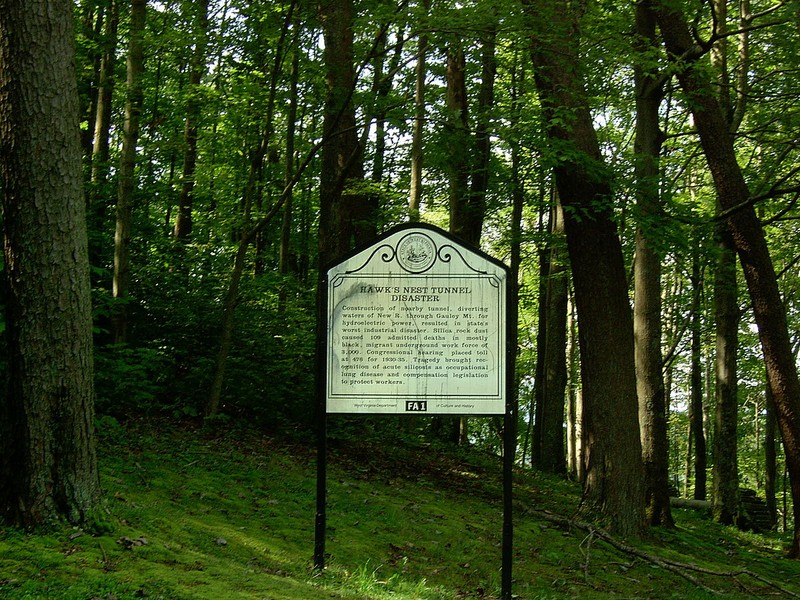
Hawk's Nest tunnel under construction.
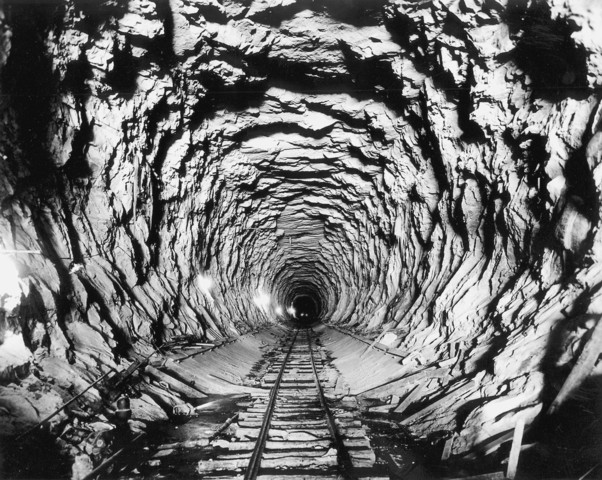
The Grille Room and Souvenir Store at nearby Hawks Nest State Park contrasts with the deadly history of the Tunnel's construction.
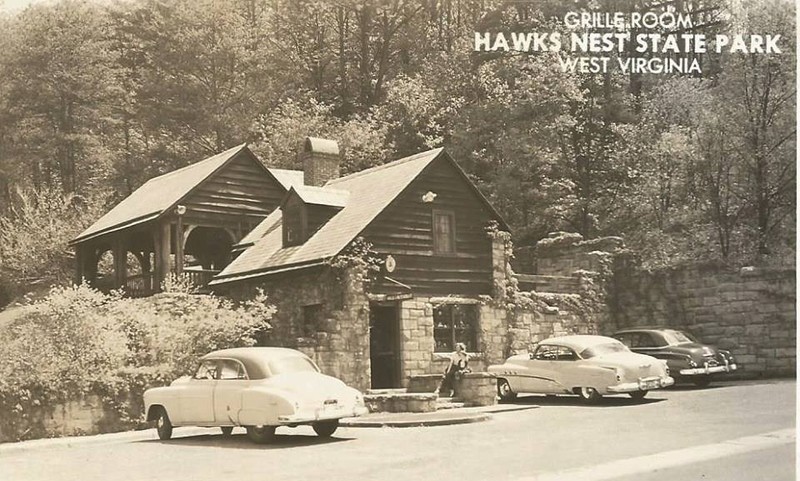
Miners working in the tunnel.
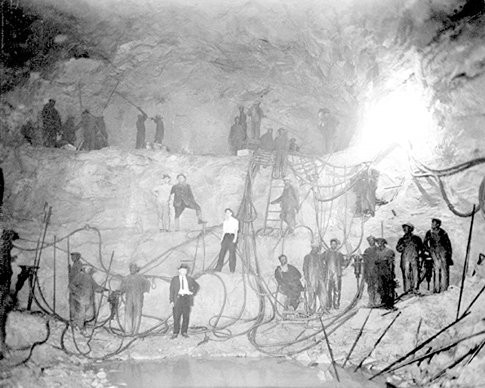
The entrance to the mine. The prodigious amount of dust raised from the tunnel's construction, clearly seen in the photograph, contained fatal amounts of silica.
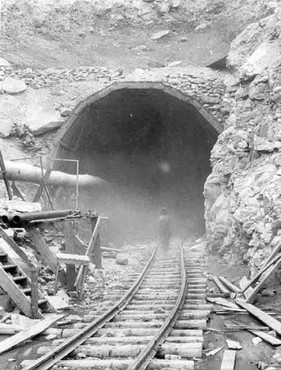
The interior of the mine.
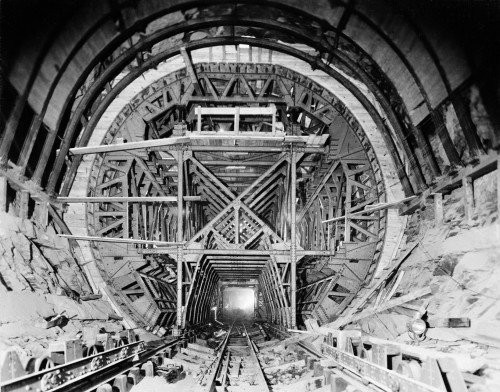
Backstory and Context
Text-to-speech Audio
The Great Depression that followed the great stock market crash of 1929 was a devastating economic climate for most Americans. When the prospect of work came along, thousands of unemployed workers usually jumped at the chance. Growing chemical giant Union Carbide then in the process of building a metallurgical plant in Alloy, West Virginia needed both a way to power the new factory and a massive supply of silica for the manufacturing process. The company devised a way to provide both with a new project: the Hawks Nest Tunnel.
With the mountainous terrain and falling waters of the area, near where the confluence of the New and Gauley Rivers become the Kanawha, hydroelectric power had been in use since the early 1900s. Union Carbide awarded Rinehart and Dennis Corporation of Charlottesville, Virginia the contract to build a three mile long tunnel through Gauley Mountain which was very rich in silica. The water would be diverted through the tunnel to a new dam for power. The contract was awarded on March 13, 1930 and the company had exactly two years from that date to have the tunnel, dam, and powerhouse completed.
There was no shortage of available men to work. The Great Depression provided the opportunity to find an available and easy workforce. Approximately 5000 men were recruited to work on the tunnel over the course of the two years-with ⅔ of them being African American. Of these 5000, 2982 were underground drilling and blasting while most of the skilled positions were filled by men from Union Carbide. Workers lived on site, in shacks, sometimes 8 men to a room. Workers were paid 35 cents an hour and worked up to 60 hours a week--however, they paid $1 a week for shack rent and electricity plus 50 cents a week for the use of a company doctor and local hospital.
The tunnel was dug through Gauley Mountain between Anstead and Gauley Bridge. Core ground samples revealed most of the rock to be high-grade silica bearing sandstone. Normally with this type of rock, a “wet drilling” technique would be used, where water is applied to the drill bits to reduce dust. However, with so little time to complete the project a dry drilling technique was used. Workers would often come home covered in a white dust from head to toe. Because this was a civil engineering project, safety measures were reduced. The tunnel had poor ventilation. There was a lack of dust control and only a limited use of personal breathing protection.
Within months of starting the project, workers started to get sick. At first, company doctors diagnosed them with pneumonia, but as more men fell ill, their families were less satisfied with the company’s explanation. A Fayetteville law firm took on the case and consulted an independent professional, Dr. Leonidas Ryan Harless, to conduct chest x-rays of affected workers. Harless confirmed that it was not pneumonia, but silicosis: a progressive fibrosis of the lungs caused by inhaling pulverized silica dioxide. The law firm went on to sue for compensation for the workers and their families against Rinehart and Dennis Corporation, aided by an agreement from Dr. Harless that he would examine any worker they represented. The Corporation’s defense stated that tunnel had the best ventilation possible while the machinery and the working conditions at Hawks Nest were the best ever known. A settlement was eventually reached--a mere $200,000. This settlement was split between 538 families and some settlements ranged from $30 upwards to $1,600.
The complete death toll from the disaster is not known. The United States House of Representatives held a congressional hearing in 1936, eventually attributing 476 deaths to the disaster. In an award-winning study conducted in 1986 by epidemiologist Martin Cherniack, however, Dr. Cherniak asserts that upward of 764 actually died of silicosis and exposure to the silica dust. Congress did not pursue any punitive actions against Union Carbide or Rinehart and Dennis.
While the death toll was still climbing, victims were dying so quickly that it became an issue as to where the dead should be buried. Only 40% of men lasted more than 2 months on the job--a mere 20% made past 6 months. The greatest hardships often fell to the African American workers--who in this segregated era were often not allowed burials in “white” cemeteries. At first, the recently deceased were dumped in the river bed and covered with tunnel rock. When public suspicions were aroused, Union Carbide paid a nearby farmer to bury African-Americans in unmarked graves in a field on Martha White’s farm in Nicholas County, near Summersville.
Today, the tunnel continues to divert water and produce electricity for the metallurgical plant in Alloy. Though Union Carbide was dismantled and sold in portions throughout the 1980s and 1990s, their persistent destruction of records coupled with a campaign to silence workers in the 1930s has prevented a meaningful body of scholarship on the disaster since--though in 2016 West Virginia University Press re-published famed New York poet Muriel Rukheyser’s “The Book of the Dead,” written in 1936, which revolves around her interactions with Hawks Nest survivors.
Silicosis has since been diagnosed as an occupational disease with compensation for workers. But while the tragedy at Hawks Nest informed this legislation, the tunnel workers of 1930-1932 were not protected by these laws, and their legacy remains largely unrecognized.
Sources
Jordan, Jennifer. Hawks Nest. WV Historical Society Quarterly. April 01, 1988. Accessed April 05, 2018. http://www.wvculture.org/history/wvhs/wvhs122.html.
Cherniak, Martin. Hawks Nest Tunnel Disaster. E-WV. December 02, 2016. Accessed April 02, 2018. https://www.wvencyclopedia.org/articles/338.
